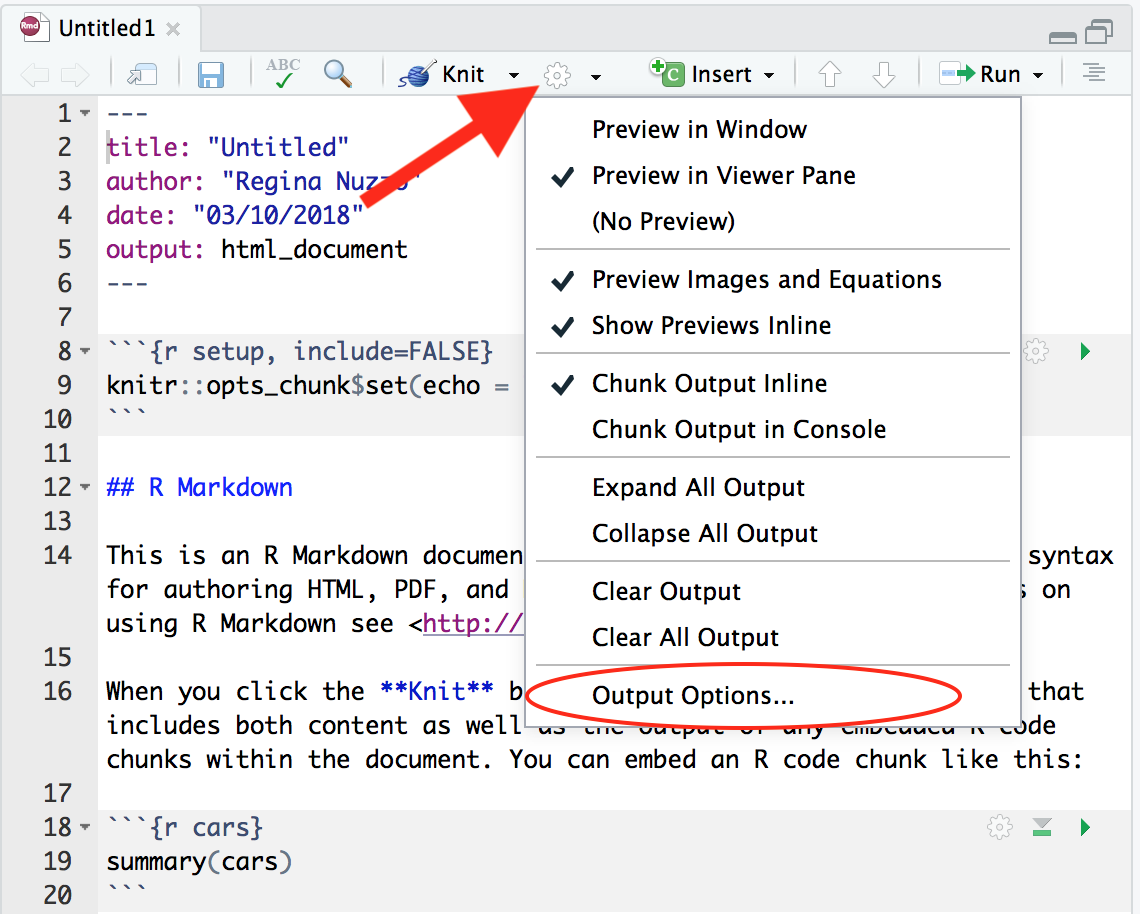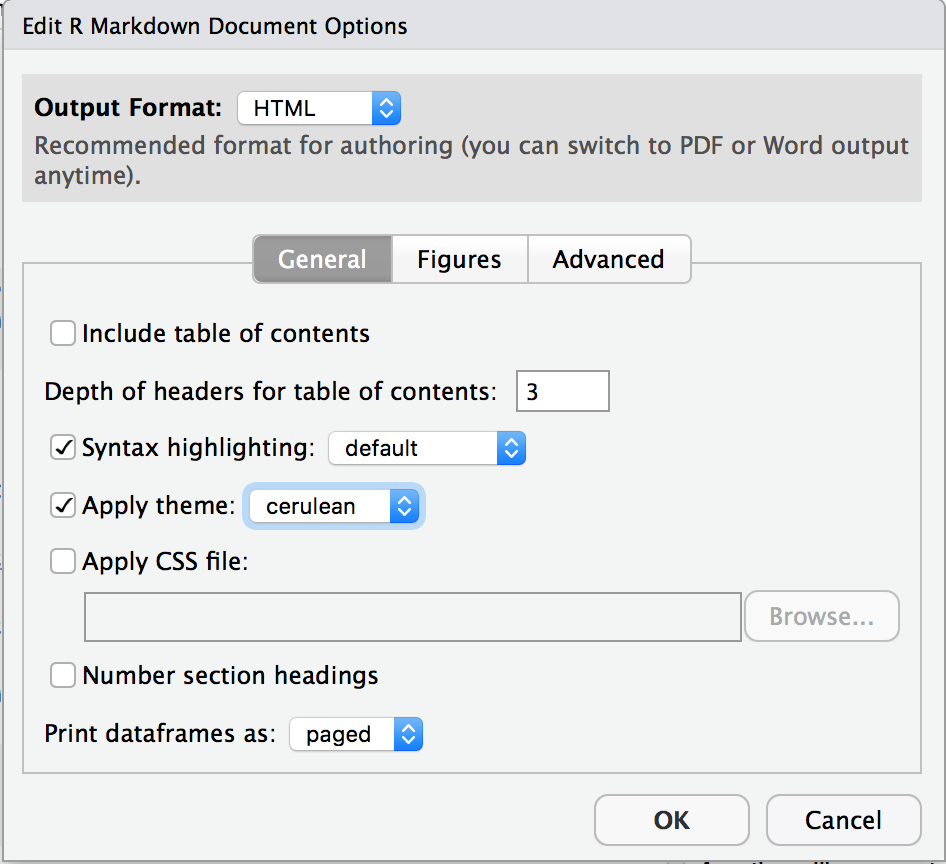Class 9: More about Rmarkdown
Computing in Molecular Biology and Genetics 1
Andrés Aravena, PhD
2 November 2020
This is an answer to several good questions asked in the forum
Congratulations for the good work
Structure in text files
Markdown is a method to write the structure of a text document
The text file can be read and understood easily
It can be transformed into other formats
- PDF, Word, Webpage (HTML)
Compiling is transforming from Markdown to other format
Flavors of Markdown
There are many different Markdown compilers
Many people make their own compiler, and they expand the original idea
Unfortunately, they are not always 100% compatible
We use Rmarkdown flavor
Rmarkdown uses a compiler called Pandoc
If you want to know more
There are two websites that tell all the details
Metadata
This is all data about the document
beyond the document itself
RMarkdown uses a header for metadata
written in a different format called YAML
YAML is an official Internet standard
It can be more than one block
Interpretation depends on a template
Markdown rules
- Metadata
- Data about the data: date, bibliography, etc.
- Uses YAML format
- use
---(three hyphens) before and after - There can be many through the document
- Header
- Metadata at the beginning of the file
- Uses YAML format
- Declare title, author, and date
Example of Header Metadata
---
title: "Midterm Exam"
subtitle: "Computing in Molecular Biology 1"
author: "Put your name here"
number: STUDENT_NUMBER
date: "November 24, 2020"
output: html_document
---ALWAYS write your name and student number
Rules for YAML files
Each list element starts in the first column. No spaces
The inner list elements are indented with 2 spaces
You can have lists inside lists inside lists…
Name and values are separated by
:Always space after
:---before and after the YAML code
Google “YAML” for more info. See also https://en.wikipedia.org/wiki/YAML
Templates
Visual organization is done with Templates
The document organization is defined in a template document
It defines how to show title, author, date
Here we use only templates already defined
but you can make your own templates if needed
Same structure can have many styles
The easiest way is to change the theme
- Several HTML styles
You can also change the output format
- Word, PDF
All this is written in the header
Click on this “gear” ⚙ and “output options”

Then select a theme

Theme and output format are chosen in the header
Please notice how the YAML header changes when we change theme
It also changes when we choose another output format
You do not need to use the menu
Instead you can write directly in the header
Authors
How to write many authors
Authors are metadata, so we write them in the header
We should write them in a structured way
Different templates handle authors in different ways
Easy way
Sometimes you can omit the " but is safer to use them.
Otherwise the compiler may get confused
Author with details
---
author:
name: "Melissa A. Wilson Sayres"
affiliation: "School of Life Sciences, Arizona State University, Tempe, Arizona, United States of America"
role: "Conceptualization, Data curation, Formal analysis"
---The first line has key but not value
The details have 2 spaces before the key name
Several authors
---
author:
- "Melissa A. Wilson Sayres"
- "Charles Hauser"
- "Michael Sierk"
- "Srebrenka Robic"
---The first line has key but not value
It is followed by a list of values, with two spaces and a dash
Combined
---
author:
- name: "Melissa A. Wilson Sayres"
affiliation: "School of Life Sciences, Arizona State University, Tempe, Arizona, United States of America"
- name: "Charles Hauser"
affiliation: "Department of Biological Sciences, St. Edward’s University, Austin, Texas, United States of America"
- name: "Michael Sierk"
affiliation: "Bioinformatics Program, Saint Vincent College, Latrobe, Pennsylvania, United States of America"
- name: "Srebrenka Robic"
affiliation: "Department of Biology, Agnes Scott College, Decatur, Georgia, United States of America"
---Example: Distill format
---
author:
- first_name: "Yihui"
last_name: "Xie"
url: https://github.com/yihui
affiliation: RStudio
affiliation_url: https://www.rstudio.com
orcid_id: 0000-0003-0645-5666
- name: "JJ Allaire"
url: https://github.com/jjallaire
affiliation: RStudio
affiliation_url: https://www.rstudio.com
- name: "Rich Iannone"
url: https://github.com/rich-iannone
affiliation: RStudio
affiliation_url: https://www.rstudio.com
output: distill::distill_article
---Bibliography
Use YAML for bibliography
references:
- type: article-journal
id: WatsonCrick1953
title: 'Molecular structure of nucleic acids: a structure for
deoxyribose nucleic acid'
author:
- family: Watson
given: J. D.
- family: Crick
given: F. H. C.
container-title: Nature
volume: 171
issue: 4356
page: 737-738
issued:
date-parts:
- - 1953
- 4
- 25How to use it
[@WatsonCrick1953]becomes (Watson and Crick 1953)[@WatsonCrick1953, pp. 33-35, 38-39]becomes (Watson and Crick 1953, 33–35, 38–39).[@WatsonCrick1953; @Collado-Vides2009a]becomes (Watson and Crick 1953; Collado-Vides et al. 2009).@WatsonCrick1953 [p. 33] says …becomes Watson and Crick (1953, 33) says …
External bibliographies
Put all the references somewhere in the document, with --- before and after.
If you have a long list of all papers, and you use it on several documents, then you can put all in a separate file
Then you write
bibliography: references.ymlin the document metadata
Other formats for references
| Format | File extension |
|---|---|
| BibLaTeX | .bib |
| BibTeX | .bibtex |
| CSL JSON | .json |
| CSL YAML | .yaml |
| EndNote | .enl |
| EndNote XML | .xml |
| ISI | .wos |
| MEDLINE | .medline |
| MODS | .mods |
| RIS | .ris |
Tools for managing the bibliography
It is good that RMarkdown uses all these formats
There are many tools to manage your paper collection
It is not enough to download PDF and store them in a folder. They need to be organized and have a structure
Two good and free programs are Mendeley and Zotero
Bibliography at the end of document
Bibliographies will be placed at the end of the document. Normally, you will want to end your document like this:
last paragraph...
# ReferencesThe bibliography will be inserted after this header
Superscripts and Footnotes
Subscripts and superscripts
Wrap text in a single ~ to put it under the line
Use ^ to put over the line
H~2~O and E=mc^2^H2O and E=mc2
In this case these are structural because they have a meaning
Foot notes
Footnotes are used to add details or comments[^1] that
are not essential to the main text, but that are good to know
[^1]: Like this comment hereFootnotes are used to add details or comments1 that are not essential to the main text, but that are good to know
(the footnote is at the end of the presentation)
Footnotes
There are two parts
In the main text, write
[^label]Below (anywhere) write
[^label]: footnote textlabel can be any text, but should not be repeated
Footnotes numbers are automatic
Equations
Other Structured text formats
Markdown files are text files with structure
There are other standards with similar goals
One very common is HTML, used for web pages
Section Header
Paragraph with H2O and E=mc2
Complete HTML file
HTML is hard to write
HTML is text, so we can read and write
But it is not easy to write
The good text editors help you to write HTML
But Markdown is easier to write, and then compile to HTML
HTML can have different styles
Remember this part in the HTML page
LaTeX: High quality documents
In Physics, Mathematics, Computer sciences and other disciplines, everybody uses another system: LaTeX
It was invented before 1980 to write math
All good biologists in Europe know how to use LaTeX
I wrote all my thesis in LaTeX
LaTeX looks like this
\documentclass{article}
\usepackage{style}
\title{Document title}
\author{Author Name}
\begin{document}
\section{Section Header}
Paragraph
Paragraph
\end{document}The \, {, } symbols are special
With great power comes great responsibility
Disadvantages of LaTeX
- Like HTML, it is hard to write without good tools
- Tables are hard to describe
- but they are super flexible
Advantages of LaTeX
- Floating figures
- Professional look
- Cross-references
- Bibliographies
- Math
RMarkdown math uses LaTeX math
Displayed formulas are wrapped with $$
$$
\sum_{i=1}^n i = \frac{n(n+1)}{2}
$$\[ \sum_{i=1}^n i = \frac{n(n+1)}{2} \]
In most cases is just “reading the formula in english”
Math has different format
If we write mathematic formulas, it is good to see the difference between x and \(x\)
The visual style has meaning
In this course we do not write math in text
If you need to write math, look for LaTeX
How do I write LaTeX
I used to write LaTeX directly
but it takes a lot of time
Today I only write Markdown, including math
and translate it to LaTeX
Sharing your error messages
Cellphone photo
Hard to read, cannot be edited, 7 Mega bytes

Print Screen
Easy to read, cannot be edited, 61 KB (100 times smaller)

Copy & paste only text
Can be translated. Can be edited. 338 Bytes (20000 times smaller)
Error in eval(parse(text = name)) : object 'html_documen' not found
Calls: <Anonymous> ... create_output_format -> create_output_format_function -> eval -> eval
Execution haltedError in eval(parse(text = name)) : object 'html_documen' not found
Calls: <Anonymous> ... create_output_format -> create_output_format_function -> eval -> evalOther topics not discussed here
- Captions of Tables
- Links to document anchors (
#like-this) - How to define anchors
- Creating new blocks with structural meaning
Conclusion
Markdown is not the goal
Some of you will not use RMarkdown
The important idea is Structure
Think about the document structure
You can use Word® better if you use know your structure elements
Markdown is good for collaboration
- GitHub
- Lightweight
- focus on structure
- Can be combined with R, Python, etc
- Most used markup language today
- Can produce great documents
Appendix
References
Collado-Vides, J, H Salgado, E Morett, S Gama-Castro, V Jiménez-Jacinto, I Martínez-Flores, A Medina-Rivera, L Muñiz-Rascado, M Peralta-Gil, and A Santos-Zavaleta. 2009. “Bioinformatics Resources for the Study of Gene Regulation in Bacteria.” Journal of Bacteriology 191 (1): 23–31.
Watson, J. D., and F. H. C. Crick. 1953. “Molecular Structure of Nucleic Acids: A Structure for Deoxyribose Nucleic Acid.” Nature 171 (4356): 737–38. https://doi.org/10.1038/171737a0.
Like this comment here↩︎